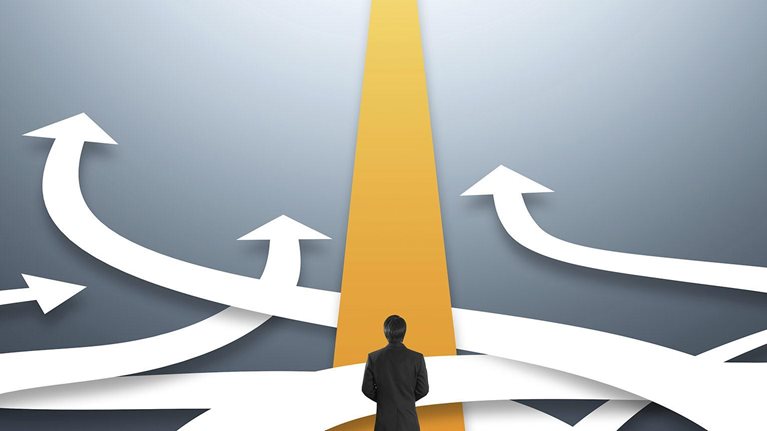The confluence of economics, psychology, game theory, and neuroscience has opened new vistas—not just on how people think and behave, but also on how organizations function. Over the past two decades, academic insight and real-world experience have demonstrated, beyond much doubt, that when companies channel their competitive and collaborative instincts, embrace diversity, and recognize the needs and emotions of their employees, they can reap dividends in performance.1
The pioneering work of Nobel laureate and Harvard professor Eric Maskin in mechanism design theory represents one powerful application. Combining game theory, behavioral economics, and engineering, his ideas help an organization’s leaders choose a desired result and then design game-like rules that can realize it by taking into account how different independently acting, intelligent people will behave. The work of Hebrew University professor Eyal Winter challenges and advances our understanding of what “intelligence” really means. In his latest book, Feeling Smart: Why Our Emotions Are More Rational Than We Think (PublicAffairs, 2014), Winter shows that although emotions are thought to be at odds with rationality, they’re actually a key factor in rational decision making.2
In this discussion, led by McKinsey partner Julia Sperling, a medical doctor and neuroscientist by training, and McKinsey Publishing’s David Schwartz, Maskin and Winter explore some of the implications of their work for leaders of all stripes.
The Quarterly: Should CEOs feel badly about following their gut or at least listening to their intuition?
Eyal Winter: A CEO should be aware that whenever we make an important decision, we invoke rationality and emotion at the same time. For instance, when we are affected by empathy, we are more capable of recognizing things that are hidden from us than if we try to use pure rationality. And, of course, understanding the motives and the feelings of other parties is crucial to engaging effectively in strategic and interactive situations.
Eric Maskin: I fully agree with Eyal, but I want to introduce a qualification: our emotions can be a powerful guide to decision making, and in fact they evolved for that purpose. But it’s not always the case that the situation that we find ourselves in is well matched to the situation that our emotions have evolved for. For example, we may have a negative emotional reaction on meeting people who, at least superficially, seem very different from us—“fear of the other.” This emotion evolved for a good purpose; in a tribal world, other tribes posed a threat. But that kind of emotion can get in the way of interactions today. It introduces immediate hostility when there shouldn’t be hostility.
The Quarterly: That really matters for diversity.
Eyal Winter: One of the most important aspects of this interaction is that rationality allows us to analyze our emotions and gives us answers to the question of why we feel a certain way. And it allows us to be critical when we’re judging our own emotions.
People have a perception about decision making, as if we have two boxes in the brain. One is telling the other that it’s irrational, these two boxes are fighting over time, one is prevailing—and then we make decisions based on the prevailing side, or we shut down one of these boxes and make decisions based on the other one only. This is a very wrong way of describing how people make decisions. There is hardly any decision that we take that does not involve the two things together. Actually, there’s a lot of deliberation between rationality and emotion. And we also know that the types of decisions that invoke perhaps the most intensive collaboration between rationality and emotions are ethical or moral considerations. As a neuroscientist, you know that one of the more important pieces of scientific evidence for this is that much of this interaction takes place in the part of the brain called the prefrontal cortex. When we confront people with ethical issues, this part of the brain, the prefrontal cortex, is doing a lot of work.
The Quarterly: Yes, and we can track this with imaging techniques. Indeed, neuroscientists keep fighting back when people try too quickly to take insights from their area of science into business, and come up with this idea of a “left-” and “right-brain” person, and exactly the boxes that you are mentioning. Given your earlier comments, do you believe we are capable in a situation where we are emotional, to actually step back, look at ourselves, realize that we are acting in an emotional way—and that this behavior might be either appropriate or not appropriate?
Eyal Winter: I think we are capable of doing it, and we are doing it to some extent. Some people do it better, some people have more difficulty. But just imagine what would have happened if we couldn’t have done it? We probably wouldn’t have managed, in terms of evolution. I think that the mere fact that we still exist, you and me, shows that we have some capability of controlling our emotions.
Eric Maskin: In fact, one interesting empirical trend that we observe through the centuries is a decline of violence, or at least violence on a per capita basis. The world is a much less dangerous place now than it was 100 years ago. The contrast is even bigger when we go back longer periods of time. And this is largely because of our ability over time to develop, first, an awareness of our hostile inclinations, but more important to build in mechanisms which protect us from those inclinations.
The Quarterly: Can you speak more about mechanism design—how important it is that systems help the individual or groups to act in ways that are desirable?
Eric Maskin: Mechanism design recognizes the fact that there’s often a tension between what is good for the individual, that is, an individual’s objectives, and what is good for society—society’s objectives. And the point of mechanism design is to modify or create institutions that help bring those conflicting objectives into line, even when critical information about the situation is missing.
An example that I like to use is the problem of cutting a cake. A cake is to be divided between two children, Bob and Alice. Bob and Alice’s objectives are each to get as much cake as possible. But you, as the parent—as “society”—are interested in making sure that the division is fair, that Bob thinks his piece is at least as big as Alice’s, and Alice thinks her piece is at least as big as Bob’s. Is there a mechanism, a procedure, you can use that will result in a fair division, even when you have no information about how the children themselves see the cake?
Well, it turns out that there’s a very simple and well-known mechanism to solve this problem, called the “divide and choose” procedure. You let one of the children, say, Bob, do the cutting, but then allow the other, Alice, to choose which piece she takes for herself. The reason why this works is that it exploits Bob’s objective to get as much cake as possible. When he’s cutting the cake, he will make sure that, from his point of view, the two pieces are exactly equal because he knows that if they’re not, Alice will take the bigger one. The mechanism is an example of how you can reconcile two seemingly conflicting objectives even when you have no idea what the participants themselves consider to be equal pieces.
The Quarterly: How has mechanism theory been applied by leaders or organizations?
Eric Maskin: It’s found applications in many areas, including within companies. Say that you’re a CEO and you want to motivate your employees to work hard for the company, but you’re missing some critical information. In particular, you can’t actually observe directly what the employees are doing. You can observe the outcomes of their actions—sales or revenues—but the outcomes may not correlate perfectly with the inputs—their efforts—because other factors besides employees’ efforts may be involved. The problem for the CEO, then, is how do you reward your employees for performance when you cannot observe inputs directly?
Eyal Winter: Here’s an example: Continental Airlines was on the verge of bankruptcy in the mid-’90s. And an important reason was very bad on-time performance—it caused passengers to leave the company. Continental was thinking both about the incentives for the individuals and, more importantly, about on-time performance. It’s a “weak link” type of technology. If one worker stalls, the entire process is stopped because it’s a sequential process, where everybody’s dependent on everybody else.
What they came up with was the “go forward” plan, which offered every employee in the company a $65 bonus for every month in which the company ranking on on-time performance was in the top five. Just $65, from the cleaners up to the CEO. It sounds ridiculous, because $65 a month seems not enough money to incentivize people to work hard, but it worked perfectly.
The main reason was that Continental recognized that there’s an aspect to incentives which is not necessarily about money. In this case, shirking would mean that you lose your own bonus of $65, but it would also mean that you will be in a situation in which you will feel you are causing damage to thousands of employees that didn’t receive a bonus that month because you stalled. It was the understanding that incentives can be also social, emotional, and moral that made this mechanism design work perfectly.
Eric Maskin: A related technique is to make employees shareholders in the company. You might think that in a very large company an individual employee’s effect on the share price might be pretty small—but as Eyal said, there’s an emotional impact too. An employee’s identity is tied to this company in a way that it wouldn’t be if she were receiving a straight salary. And empirical studies by the labor economist Richard Freeman and others show that even large companies making use of employee ownership have higher productivity.
The Quarterly: How would you advise leaders to facilitate group collaborations, especially in organizations where people feel strong individual ownership?
Eyal Winter: It’s again very much about incentives. One has to find the right balance between joint interest and individual interest. For example, businesses can overemphasize the role of individual bonuses. Bonuses can be counterproductive when they generate aggressive competition in a way which is not healthy to the organization.
There are interesting papers about team behavior, and we know that bonuses for combined individuals, or bonus schemes that combine some individual points with some collective points, or which depend on group behavior as a whole, often work much more effectively than individual bonuses alone. The balance between competition and cooperation is something that CEOs and managers have to think deeply about, by opting for the right mechanism.
The Quarterly: Can mechanisms that encourage collaboration also be used to foster innovation?
Eric Maskin: Collaboration is a powerful tool for speeding up innovation, because innovation is all about ideas. If you have an idea and I have an idea, then if we’re collaborating we can develop the better idea and ignore the worse idea. But if we’re working alone, then the worse idea doesn’t get discarded, and that slows down innovation.
Collaboration in academic research shows an interesting trend. If you look at the list of papers published in economics journals 30 years ago, you’ll find that most of them were single-authored. Now the overwhelming majority of such papers, probably 80 percent or more, are multiauthored. And there’s a very good reason for that trend: in collaborative research, the whole is more than the sum of the parts because only the best ideas get used.
Eyal Winter: There’s another aspect in the working environment which is conducive to innovation. And that is whether the organization will be open to risk taking by employees. If you’re coming with an innovative idea, not a standard idea, there is a much greater risk that nothing will come out of it eventually. If people work in an environment which is not open for taking risks, or alternatively in which they have to fight for survival within their organization, they will be much less prone to take the risks that will lead to innovation.
The Quarterly: What about innovation in a world of vast amounts of data and advanced analytics at our fingertips? Is there untapped potential here for behavioral economics?
Eric Maskin: One exciting direction is randomized field experiments. Up until now, most experiments in behavioral economics have been done in the lab. That is, you put people in an artificial setting, the laboratory, and you see how they behave. But when you do that, you always worry about whether your insights apply to the real world.
And this is where randomized field experiments come in. Now you follow people in their actual lives, rather than putting them in the lab. That gives you less control over the factors influencing behavior than you have in the lab. But that’s where big data help. If you have large enough data sets—millions or billions of pieces of information—then the lack of control is no longer as important a concern. Big data sets help compensate for the messiness of real-life behavior.
The Quarterly: Big data analytics is also tapping into artificial intelligence. But can a computer be programmed to reason morally, as people do—and how might that play out?
Eyal Winter: I think there will be a huge advancement in AI. But I don’t believe that it will replace perfectly or completely the interaction between human beings. People will still have to meet and discuss things, even with machines.
Eric Maskin: Humans are instinctively moral beings and I don’t see machines as ever entirely replacing those instincts. Computers are powerful complements to moral reasoning, not substitutes for it.




